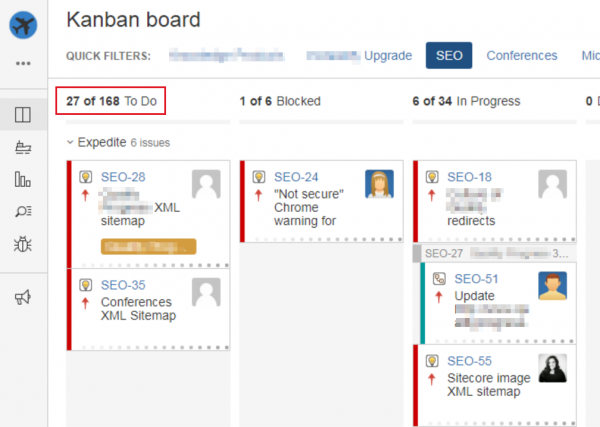The majority of dev projects fail to meet timelines and budget. As an SEO who’s been part of countless platform migrations and website redesigns, I can recall very few that launched both on time and within the allocated budget. When projects almost inevitably fail, it becomes easy to take shortcuts instead of investing the necessary resources for the optimal solution. Since technical SEO can take significant effort and usually heavily relies on the development team, it’s often quick to become the first discipline or channel to be ignored or neglected.
This over time results in technical SEO debt. If unpaid, it eventually causes a vicious cycle of what seems like an endless to-do list for the development team combined with enterprise SEOs waiting at least a year for any critical technical SEO fixes to get done. The unresolved issues hurt everyone by limiting the positive impact of optimization, in addition to taking more time to correct in the long-run. Whether you inherited the debt, accidentally created it, or incurred it intentionally to meet a project deadline, the debt must eventually be repaid, often with interest – Google won’t wait forever.

Prevent and Avoid Debt
To start, preventing debt before it becomes a debt spiral is easiest when you already have SEO regularly incorporated into the development process or queue. If you can routinely include SEO as part of any dev project, often debt can be avoided or at least anticipated.
When debt has been incurred or budgeted for, be prepared to come up with creative approaches and alternatives to resolve technical SEO issues. There is no one-size-fits-all approach, so you should consider multiple solutions to accomplish your goals without compromising too much or waiting forever for it to get fixed.
You can also avoid unnecessary debt with agile and proactive error spotting to identify top debt contributors. This requires iterative auditing and crawling of the website and setting up custom alerts for statistically significant events like changes in site speed, 404 errors, and traffic anomalies. Don’t be that person who takes months to notice their site was accidentally noindexed or fails to investigate messages from Google Search Console.
Prioritize and Get Buy-In
Proving the ROI of technical SEO is one of the most challenging things you can do when each channel has different priorities, and the technical knowledge gap continues to widen. Be as strategic and thoughtful as possible to earn buy-in from stakeholders by asking and answering these questions after you’ve finished identifying debt contributors.
1. Can it wait?
Do your best to understand the root causes of technical issues, debt contributors, and critical red flags. Use sound judgment and escalate critical problems as soon as you observe them.
2. What is the opportunity cost of doing nothing?
Be as detailed as possible when outlining your best guess of the potential gains and losses if the debt goes unpaid. If the opportunity cost is low, then generally you can reduce prioritization.
3. What will make a noticeable outcome with the least effort?
Everyone wins when you can propose a solution to something that is likely to work and requires minimal effort. Build out your spreadsheet documenting all identified issues and potential solutions, still stressing the expected level of impact and anticipated effort for each.
4. How will it improve UX or SEO?
It’s easier to prioritize and get buy-in if there’s something that’s fundamentally broken that impacts basic SEO and overall user experience or prevents users from completing the associated action. Do this by determining your ‘nice-to-haves’ versus ‘must-haves’. Then, relate each back to UX and URL discovery, crawling, indexing, retrieving, and ranking.
5. Can you tie it back to overall strategy and goals?
Aligning your organic search goals with your customer’s business goals makes it that much easier to get the buy-in needed. Illustrate how a technical fix can actually help generate more traffic and even revenue allowing you to skip the dev queue while aligning technical SEO with strategic initiatives.
Repay in Installments
Now that you’re ready to start chipping away at technical SEO debt, expect some resistance from the dev team or client purely due to a lack of resources. When this happens, consider asking them to let you prove the value by pitching a test or proof-of-concept while you wait for the fix to be implemented. Conducting a mini experiment is good for everyone because it’s usually not a lot of work and you’ll get a stronger indication of what impact it’s likely to have.
Closing Thoughts
Finally, keep in mind that technical SEO debt, especially at the enterprise level is inevitable. However, debt can be managed before everything is in flames. Do what you can to prevent forever haunting the JIRA ticket graveyard, prioritize your technical efforts, and chip away at your repayment plan. You most likely won’t be able to avoid or fix everything, but keep trying!
Interested in learning technical SEO debt management from real-world enterprise SEO clients? Check out my Pubcon Austin 2018 presentation here.
